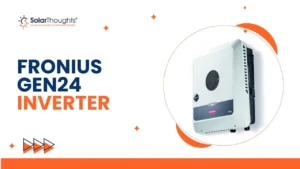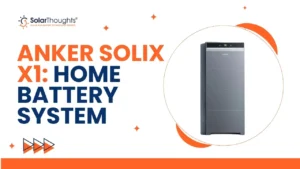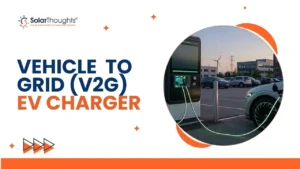Can solar panels cause fires? It’s a common concern for homeowners, but the truth is that solar panel fires are extremely rare. While incidents do occur — such as the 139 solar-related fires reported in New South Wales last year — they represent a tiny fraction of total installations across Australia.
Table of Contents
ToggleMost issues arise from faulty DC isolators or inverter components, not the panels themselves. In fact, with proper installation and maintenance, your solar system is just as safe as any other home electrical appliance.
In this article, SolarThoughts® explores what causes solar panel fires, how common they actually are, and the simple safety measures you can take to keep your solar setup running smoothly and securely for years to come.
How common are solar panel fires?
The data reveals that solar panel fires are extremely rare occurrences. Studies consistently show fires related to solar systems happen in less than 1 out of every 10,000 installations.
Furthermore, a study found that out of 10,000 building fires, only 152 cases (less than 2%) involved buildings equipped with solar energy systems.
Nevertheless, the numbers are growing in some regions. In the UK, there were six times more fires involving solar panels last year compared with 10 years ago. Specifically, 66 cases were recorded up to July 2023, compared to 63 for the entirety of 2019. Similarly, the Northern Territory saw 11 properties suffer fires from DC isolators in 2023, up from just 4 in 2022.
To put this in perspective, solar panel fires haven’t made it onto any top 10 list of domestic fire causes—statistically, your Christmas tree lights pose a greater risk. Generally, research shows there are approximately 0.289 fires per megawatt installed, or 28.9 fires per gigawatt.
When fires do occur, they primarily originate from electrical components rather than the panels themselves. DC isolators and inverters cause most solar-related fires, a point we’ll explore in greater detail in the next section.
What causes solar panel fires?
Several factors contribute to solar panel fires. DC isolators, which disconnect solar panels from the electrical system, account for 52% of solar-related fires. These components are often located on rooftops, making them vulnerable to harsh weather conditions and water damage.
Faulty installation ranks among the leading causes of solar-related fires. Improperly installed systems can introduce electrical faults through loose connections, poorly crimped wires, and incorrect system layouts. Additionally, poor-quality components such as low-grade panels, inverters, or connectors increase fire risk as they deteriorate over time.
Wildlife poses another significant threat. When animals chew on high-voltage wiring, they expose conductors beneath, creating potential ignition points. Nesting materials combined with damaged wires create perfect conditions for fires, especially since these nests often contain dry, flammable materials. Moreover, a study found animal-related events caused an average 28% loss in production during affected years.
Environmental factors also play a role. Hailstorms and extreme weather can damage panels, creating fire hazards if not promptly addressed. Likewise, accumulated dirt containing flammable materials increases fire risk in areas with high electrical activity.
Regular maintenance remains crucial. A rooftop solar system left unchecked by qualified professionals can have deadly consequences. Even a system inspected today could develop problems tomorrow if animals damage insulation overnight.
How to prevent solar panel fires at home
Preventing solar panel fires begins with understanding the critical safety measures every homeowner should implement. Firstly, always hire certified, qualified professionals for installation. The National Solar Licensing Database provides information about state-specific licensing requirements for installers, ensuring your system meets the highest safety standards.
Routine maintenance is crucial—the Queensland Fire and Emergency Service reported over 60 solar-related fires last year, mostly caused by isolated components not properly maintained. Professional inspections can identify potential issues before they escalate into fire hazards.
Invest in high-quality components with proper certifications. Solar panels should last 25-30 years; consequently, cutting corners on quality isn’t worth the risk.
Consider using microinverters or DC optimizers instead of string inverters. These operate at under 60 volts DC, significantly lower than traditional systems, reducing the risk of dangerous arc faults.
In essence, modern systems should include Rapid Shutdown capabilities that de-energize your solar array to 30V or less within 30 seconds of activation. This essential safety feature protects first responders during emergencies.
Finally, invest in a good monitoring system that can detect fault conditions using algorithms. These can identify panel issues that might be precursors to breakdowns which, if left unaddressed, could lead to high DC voltage arcing and roof fires.
Conclusion
While the idea of solar panel fires might sound concerning, the reality is that they are extremely rare when systems are installed and maintained properly. Choosing certified installers, scheduling routine inspections, and using quality components go a long way toward ensuring long-term safety and performance.
With modern safety features and reliable technology, solar panels remain one of the safest and most sustainable energy choices for Australian homeowners.
If you’re looking for professional solar panel installation in the Gold Coast, contact SolarThoughts® today for expert guidance, high-quality systems, and a free personalised quote.






